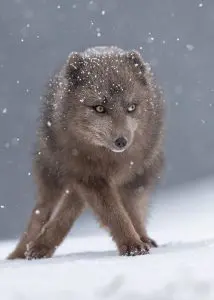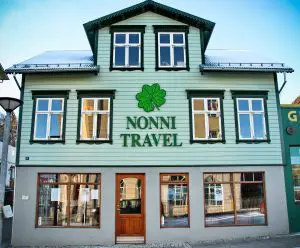Hornstrandir & Strandir
Hornstrandir & Strandir Tours
Learn More About Hornstrandir & Strandir
 Hornstrandir and Strandir are two of Iceland’s most remote and breathtaking regions, located in the northwest corner of the country. Known for dramatic landscapes and untouched wilderness, they are a dream for travelers seeking solitude, wild beauty, and authentic adventures. Our customized self-drive tours in Iceland can include both areas, allowing you to explore on your own terms while following routes created by locals who know the land well.
Hornstrandir and Strandir are two of Iceland’s most remote and breathtaking regions, located in the northwest corner of the country. Known for dramatic landscapes and untouched wilderness, they are a dream for travelers seeking solitude, wild beauty, and authentic adventures. Our customized self-drive tours in Iceland can include both areas, allowing you to explore on your own terms while following routes created by locals who know the land well.
Hornstrandir, a protected nature reserve in the Westfjords, is one of Iceland’s most pristine destinations. Accessible only by boat or hiking, it offers cliffs, jagged mountains, and sweeping valleys shaped by centuries of raw nature. Arctic foxes roam freely here, and the hiking trails lead through lush valleys, past hidden waterfalls, and along rugged shorelines with spectacular views. With no roads and no permanent settlements, Hornstrandir feels timeless and untouched. This is an unforgettable choice for those who want to add real wilderness to their personalized self-drive tours in Iceland.
Strandir, lying east of Hornstrandir, has a different but equally captivating atmosphere. Its rugged coastline, winding fjords, and geothermal activity make it one of Iceland’s hidden treasures. Old fishing villages reveal the region’s history, while local folklore about elves and ghosts still adds character to the area. Strandir is especially loved for its hot spring, where travelers can soak in a warm, natural pool at the end of the road while gazing over mountains and sea. With fewer visitors than most parts of Iceland, Strandir is ideal for travelers who want peace woven into their remote Iceland adventures.
Together, Hornstrandir and Strandir capture the wild heart of the Westfjords and offer something rare: a chance to feel the raw power of Icelandic nature far away from the tourist sites. By choosing one of our personalized or customized self-drive tours in Iceland, you can experience these regions at your own pace, with local insight guiding you to the best trails, hidden hot springs, and authentic encounters.
From Our Backyard: Insider Tips, Culture & Adventure
Why Coolcations Are the Future of Travel: Iceland, the Faroe Islands, and Greenland Should Top Your List!
How We Will Create Your Lifetime Journey: Best Self-Drive Tours in Iceland and the Faroe Islands
A Local’s Guide to Car Insurance in Iceland: What Every Traveler Should Know
Velkomin!
Most Common Questions About Hornstrandir & Strandir in Iceland
What is Hornstrandir in Iceland?
Hornstrandir is a remote and pristine wilderness area in the Westfjords of Iceland, known for its dramatic landscapes, rugged cliffs, Arctic wildlife, and hiking trails. It’s part of the Hornstrandir Nature Reserve, a protected area that attracts nature lovers and adventure seekers.
Where is Hornstrandir located?
Hornstrandir is located in the northernmost part of the Westfjords in Iceland. It is accessible by boat from Ísafjörður, the largest town in the Westfjords.
What makes Hornstrandir special?
Hornstrandir is special because it is one of the most untouched and isolated regions in Iceland, offering stunning landscapes, towering cliffs, dramatic fjords, and incredible wildlife such as Arctic foxes and seabirds.
What wildlife can I see in Hornstrandir?
In Hornstrandir, you can see a wide variety of wildlife, including the Arctic fox, seals, puffins, and other seabirds. It’s also a prime spot for birdwatching, with hundreds of bird species nesting in the cliffs during summer.
Can I hike in Hornstrandir?
Yes, Hornstrandir offers some of the most scenic and challenging hiking trails in Iceland. Trails range from short walks to multi-day treks, taking you through pristine landscapes, up into the mountains, and along coastal cliffs.
What is the best time to visit Hornstrandir?
The best time to visit Hornstrandir is during the summer months, from June to August, when the weather is milder and the hiking trails are accessible. However, it’s important to note that the area is only accessible by boat during these months.
How do I get to Hornstrandir?
Hornstrandir is accessible only by boat. You can take a ferry from Ísafjörður to the nature reserve. There are also guided tours that provide transport and expert knowledge about the region.
Is there any accommodation in Hornstrandir?
There is very limited accommodation in Hornstrandir, with only a few basic cabins and shelters available for hikers. Most visitors camp or stay in nearby towns like Ísafjörður before or after their trip to the reserve.
Are there any services or shops in Hornstrandir?
There are no services or shops in Hornstrandir. Visitors are advised to bring all the necessary supplies, such as food, water, and camping gear, before arriving. Ísafjörður has grocery stores where you can stock up.
What is Strandir in Iceland?
Strandir is a coastal region in the northern part of the Westfjords, known for its stunning landscapes, fishing villages, and historical sites. Strandir is less visited than Hornstrandir but offers a similarly remote and wild experience.
How is Strandir different from Hornstrandir?
While Hornstrandir is a nature reserve with a focus on hiking, wildlife, and isolation, Strandir is more accessible, with several small villages and a rich cultural history. Strandir is also known for its hot springs and fishing heritage.
What are the main towns in Strandir?
The main towns in Strandir include Hólmavík and Djúpavík. These villages are small but offer accommodation, food, and a glimpse into the region’s fishing history. Hólmavík is also home to the Museum of Witchcraft and Sorcery.
What is the Museum of Witchcraft and Sorcery in Strandir?
The Museum of Witchcraft and Sorcery in Hólmavík showcases Iceland’s history of witchcraft, sorcery, and old beliefs. The museum has fascinating exhibits on the witch trials that took place in the 17th century and the magical practices that were once widespread in the area.
What should I bring when visiting Hornstrandir or Strandir?
When visiting Hornstrandir or Strandir, it’s essential to bring warm, waterproof clothing, including a jacket, gloves, and sturdy hiking boots. You should also bring food, water, and camping gear if you plan to stay overnight in the wilderness.
What is the significance of Djúpavík in Strandir?
Djúpavík is a small village in Strandir known for its historic herring factory, which was once the heart of the local economy. Today, the factory remains as a museum and cultural site, and the village itself is a picturesque place to visit.
Can I see Arctic foxes in Hornstrandir?
Yes, Hornstrandir is one of the best places in Iceland to see the Arctic fox. The foxes are most commonly spotted in the summer months when they are active and searching for food.
What are the best hiking trails in Hornstrandir?
Popular hiking trails in Hornstrandir include the Hornbjarg Cliff Trail, which offers breathtaking views over the cliffs, and the Hiking Trail to Hesteyri, which takes you through stunning coastal and mountain landscapes.
Can I fish in Hornstrandir and Strandir?
Yes, fishing is a popular activity in Strandir, especially in the fjords around Hólmavík and Djúpavík. Hornstrandir, being more remote, does not have as many fishing opportunities, but it’s possible to fish in certain areas if you have the proper permits.
Is there any accommodation in Strandir?
Yes, Strandir has several accommodation options, including guesthouses, small hotels, and homestays in Hólmavík and Djúpavík. These provide a comfortable base for exploring the region.
What can I do in Hólmavík?
In Hólmavík, you can visit the Museum of Witchcraft and Sorcery, enjoy local cafes, and explore the surrounding fjords. Hólmavík is also an excellent base for exploring Strandir and its hot springs, fishing history, and nearby hiking opportunities.
Can I visit hot springs in Strandir?
Yes, Strandir is known for its hot springs, such as the Krossneslaug Hot Spring, which is located right on the coast with views of the ocean. The hot springs offer a relaxing way to enjoy the remote surroundings.




